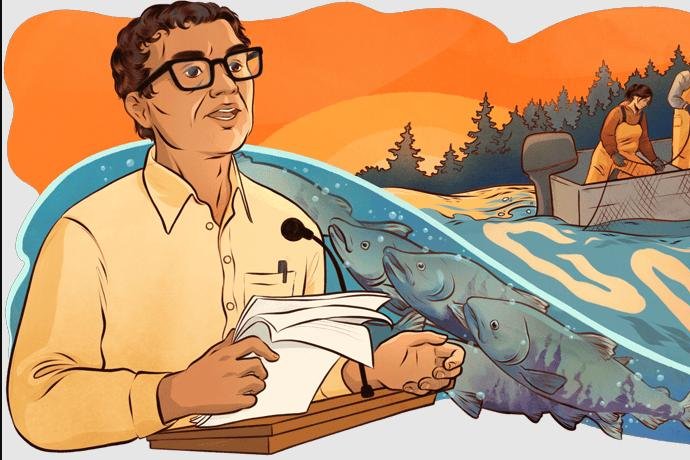Introduction to Hank Adams
Hank Adams, a prominent Native American activist and policy advocate, is often remembered as one of the most influential yet lesser-known figures in American civil rights history. Born in 1943 and of Assiniboine-Sioux descent, Adams spent decades fighting for Native American sovereignty, treaty rights, and the overall recognition of Indigenous peoples within the framework of U.S. law and society.
What made Hank Adams stand out was not just his relentless activism but also his keen strategic mind, his deep understanding of legal frameworks, and his dedication to peaceful negotiation. While others made headlines, Adams worked behind the scenes, crafting legal arguments, orchestrating protests, and advising leaders — all with the singular goal of ensuring justice for Native communities.
Early Life and Education
Hank Adams was born on the Fort Peck Indian Reservation in Montana. His early experiences with racial discrimination and government neglect of Native peoples fueled his desire to fight for change. Adams’ family later moved to the Pacific Northwest, where he attended Moclips-Aloha High School in Washington state and emerged as a top student-athlete.
He later went on to attend the University of Washington, and although he didn’t graduate in the traditional sense, his self-taught expertise in law and policy would rival that of any Ivy League scholar. Adams was known for devouring law books and court rulings, equipping himself with the intellectual tools to challenge unjust policies at the highest levels.
The Bold Activism of the Fish Wars

Perhaps the most iconic chapter in Hank Adams’ life was his role in the “Fish Wars” of the 1960s and 70s. During this time, Indigenous tribes in the Pacific Northwest were being harassed, arrested, and assaulted for exercising their treaty-protected fishing rights. These confrontations often occurred in places like the Nisqually and Puyallup Rivers.
Adams became a pivotal strategist and legal advisor for these Native fishing protests. He worked with tribal leaders to organize “fish-ins,” where Native fishermen would cast their nets in defiance of state-imposed restrictions. These acts of civil disobedience caught national attention and were often violent. Adams was beaten and arrested multiple times, but he never wavered.
His tireless advocacy culminated in the landmark United States v. Washington case, better known as the Boldt Decision of 1974. Judge George Boldt ruled that Native tribes were entitled to up to 50% of the harvestable fish in their traditional waters, reaffirming treaty rights that had long been ignored. This legal victory was a direct result of the groundwork laid by Adams and his peers.
Legal Mind and Negotiator
Though never a lawyer in the traditional sense, Hank Adams’ grasp of legal principles earned him immense respect in political and legal circles. He authored influential position papers and policy drafts that shaped federal and tribal relations.
One of his most notable contributions was a 1969 document titled “The Twenty Points”, drafted as part of the Trail of Broken Treaties protest in Washington, D.C. This set of demands laid out a comprehensive blueprint for U.S.–Native American relations, calling for the restoration of treaty-making authority, land reform, and tribal sovereignty.
Adams helped lead the negotiations when the protest resulted in the occupation of the Bureau of Indian Affairs (BIA) headquarters. His calm demeanor and intellect helped avoid a potentially violent confrontation. The Nixon administration took notice, and Adams began working closely with officials to pursue reforms.
A Man of Peace in Tumultuous Times
While the late 1960s and early 1970s saw rising militancy among Native American movements — including the rise of the American Indian Movement (AIM) — Adams chose a different path. He consistently advocated for peaceful negotiation over confrontation.
This approach was on full display during the Wounded Knee occupation in 1973, when AIM members seized the South Dakota town to protest corruption within the Bureau of Indian Affairs and poor living conditions on reservations. As federal agents surrounded the area, a violent standoff loomed.
Adams was called in to negotiate a peaceful resolution. He walked into Wounded Knee unarmed and at great personal risk. Over several weeks, he worked with government officials and Native leaders to bring the occupation to a nonviolent end. Though tensions remained, his intervention likely saved lives on both sides.
Long-Term Influence on Native Policy
Hank Adams’ legacy doesn’t just reside in bold protests or legal battles; it’s also in the long-lasting policies he helped shape. His work contributed to:
- The Indian Self-Determination and Education Assistance Act of 1975, which gave tribes greater control over federal programs on their lands.
- Advancing tribal sovereignty in negotiations with both federal and state governments.
- Supporting Indigenous education and cultural preservation programs.
His policy work often extended behind the scenes. He was an advisor to multiple tribal nations and even served on federal commissions. Leaders across Indian Country respected Adams for his ability to bridge the gap between grassroots activism and high-level policy-making.
Recognition and Awards
Despite being a behind-the-scenes figure for much of his life, Hank Adams received multiple accolades later in his career:
- In 2006, he received the American Indian Visionary Award from Indian Country Today.
- He was lauded by peers as “the most important Native American leader of the 20th century that most people don’t know about.”
- Various academic institutions and Indigenous organizations have cited his work in legal studies, public policy, and history curriculums.
But perhaps the most profound recognition of all was the reverence shown by Indigenous elders and youth who saw Adams as a true embodiment of leadership, wisdom, and service.
The Legacy Lives On
Hank Adams passed away in December 2020, but his legacy lives on in every legal victory, tribal negotiation, and cultural renaissance movement that continues today.
His ability to combine grassroots activism with legal mastery makes him a unique figure in civil rights history. Adams didn’t just protest injustice; he worked to change the system from within. His calm yet fierce approach inspired generations of Native leaders, lawyers, and community organizers.
Modern movements for Native rights — from pipeline protests to land reclamation efforts — continue to cite the work of Adams. His legacy is a testament to the power of knowledge, negotiation, and unwavering dedication to justice.
Final Thoughts
In a world that often celebrates the loudest voices, Hank Adams proved that change can come from quiet determination, thoughtful planning, and relentless commitment. His impact on American history, Native rights, and legal policy cannot be overstated.
Whether you’re learning about the Boldt Decision, the Trail of Broken Treaties, or the Wounded Knee standoff, you’ll find Hank Adams at the heart of it all. He wasn’t just a witness to history — he was its architect.
As more people look to honor Native history and amplify Indigenous voices, the story of Hank Adams deserves to be told, taught, and remembered for generations to come.



